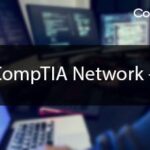Cyber Security for GEN AI Tools in India

Cyber Security for GEN AI Tools in India
Cyber Security for Gen AI Tools in India 2025
Introduction to Gen AI Tools and Their Significance
What are Generative AI Tools?
Advanced machine learning systems known as generative artificial intelligence (Gen AI) tools can produce text, graphics, audio, and code based on patterns discovered in large datasets. GitHub Copilot, DALL-E, ChatGPT, and other large language or multimodal models are a few examples.
In simple words, an artificial intelligence class known as “Generative AI Tools” is capable of producing original material in a variety of media, such as text, graphics, audio, video, and code. Generative AI learns the underlying patterns and structures of its training data and then applies this knowledge to produce unique and realistic outputs, in contrast to traditional AI, which is made to evaluate or act on preexisting data.
Understanding the Cyber Security Landscape
The Evolving Nature of Cyber Threats
Advanced cyberthreats are using automation and artificial intelligence to find weaknesses. These days, attackers use sophisticated strategies like ransomware-as-a-service, AI-based phishing scams, and zero-day attacks. Hence, just because of the evolving nature of cyber threats, it has certainly become the need of the hour to adopt some necessary changes to our IT infrastructure in order to secure it with the greatest precautions and usefulness.
Why Gen AI Tools Are a New Target for Cybercriminals
Gen AI technologies are profitable targets because they frequently process proprietary and sensitive data. Their dependence on cloud-based storage, real-time data access, and APIs creates more attack surfaces for hackers to take advantage of.
Thus, cybercriminals tend more prone towards obtaining useful data from Gen AI Tools and technologies rather than going towards an ara with no or minimum beneficial digital assets.
Potential Cybersecurity Risks Associated with Gen AI
| Data Privacy and Leakage Concerns | Data breaches could result from Gen AI models inadvertently remembering and repeating private information. Inappropriate input/output data handling can also reveal private information. |
| Model Inversion Attacks and Data Reconstruction | By taking advantage of model outputs, attackers can recreate training data in model inversion attacks, possibly recovering sensitive user data that was used to train the model. |
| Prompt Injection and Manipulation Attacks | The integrity and reliability of Gen AI technologies can be jeopardized by attackers who can use malicious prompts to alter AI replies or obtain information that is forbidden. |
| API Exploits and System Vulnerabilities | AI systems may be vulnerable to illegal access, data manipulation, or service interruption due to insecure APIs and integrations. |
Best Practices for Securing Gen AI Tools
Here’s a full explanation on the Best Practices for Securing Generative AI (Gen AI) Tools, emphasizing the important areas you mentioned:
Secure Data Handling and Encryption Protocols
Massive volumes of data are essential to Gen AI tools. Data breaches, intellectual property leaks, and privacy violations can result from improper handling, particularly when sensitive or proprietary data is involved.
Some of the best practices are mentioned below:
- Data Classification & Labeling,
- Encryption in Transit and at Rest,
- Input Sanitization,
- Output Scrubbing,
- Data Minimization,
- Secure APIs, etc.
Access Control and Identity Management
Gen AI technologies should only be accessible to and operated by authorized people and systems, particularly in enterprise settings where abuse may result in IP loss or compliance problems.
Further, some of the prime practices are jotted down:
- Role-Based Access Control (RBAC),
- Multi-Factor Authentication (MFA),
- Least Privilege Principle,
- Federated Identity Management,
- Session Management, etc.
Monitoring, Logging, and Anomaly Detection
Intelligent logging and ongoing monitoring assist in identifying anomalous activities and offer information about possible breaches or misuse trends.
It is challenging to identify abuse, security breaches, or performance problems in Gen AI systems when there is no visibility into how they are being utilized.
Some of the best practices are mentioned below:
- Comprehensive Logging,
- Secure Log Storage,
- Real-Time Monitoring,
- Anomaly Detection Systems,
- Alerting and Incident Response, etc.
Building Resilient AI Models
Adversarial Training and Robustness Techniques
Adversarial training can strengthen models’ resistance to manipulation and guarantee dependable operation even in challenging conditions.
Regular Security Audits and Penetration Testing
Regular audits and ethical hacking exercises strengthen security defenses and aid in the early detection of vulnerabilities.
Regulatory and Compliance Considerations
GDPR, CCPA, and AI-specific Guidelines
1. General Data Protection Regulation (GDPR) – EU
Key Considerations:
- Lawful Basis for Processing,
- Right to Explanation,
- Data Minimization and Purpose Limitation,
- Data Subject Rights,
- Cross-border Data Transfers, etc.
2. California Consumer Privacy Act (CCPA) – US
Key Considerations:
- Consumer Rights,
- Transparency Requirements,
- Sensitive Personal Information, etc.
3. AI-Specific Guidelines & Draft Regulations
- EU AI Act (upcoming),
- OECD AI Principles,
- NIST AI Risk Management Framework (US),
- China’s AI Regulations, etc.
Organizational Policies for AI Governance
Businesses must create strong internal governance frameworks in addition to adhering to the law to guarantee that AI systems are applied morally, securely, and in accordance with their core values.
AI Governance Frameworks
- Establish explicit guidelines for the usage of AI that specify what applications are permissible and what are not (e.g., no autonomous weapon systems, bias-sensitive applications).
- Create a cross-functional, centralized AI governance policy that includes representatives from legal, data science, IT, HR, and compliance.
- Keep track of the where, how, and why of AI’s use across departments by maintaining AI project inventories.
Responsible AI Principles
| Fairness | Mitigate bias in data, models, and outcomes. |
| Transparency | Document and disclose how models work and what data they use. |
| Accountability | Assign clear ownership for every AI system or use case. |
| Security | Protect models and data from attacks (e.g., adversarial inputs, model theft). |
| Human Oversight | Embed checks and controls to ensure that humans can override or validate AI decisions, especially in high-impact scenarios |
Role of Developers and Organizations
- Security by Design: Building from the Ground Up
To guarantee AI systems are reliable from the start, developers should incorporate security concepts into the design and development stages.
- Continuous Training and Security Awareness
Frequent training for security and development teams helps professionals stay informed about changing risks and cultivates a culture of alertness.
Tools and Frameworks to Enhance Security
- Recommended Cybersecurity Platforms
Strong protection for AI infrastructure is provided by platforms such as Palo Alto Cortex XSOAR, Microsoft Defender for Cloud, and CrowdStrike Falcon.
- Open-Source Tools for Gen AI Security
Tools like Google’s Sec-PaLM, IBM’s Adversarial Robustness Toolbox, and OpenAI’s Safety Gym offer customization and transparency for protecting Gen AI models.
The Future of Cybersecurity in the Gen AI Era
- Emerging Trends and Predictive Threat Intelligence
1. Shift from Reactive to Predictive Security
Generative AI is enabling a transformation from traditional reactive cybersecurity to predictive threat intelligence, where threats are anticipated before they materialize. Traditional reactive cybersecurity is giving way to predictive threat intelligence, where risks are foreseen before they manifest, thanks to generative AI.
Key Developments:
- Behavioral Modeling,
- Threat Anticipation,
- Dynamic Threat Scoring, etc.
2. Gen AI in Threat Actor Toolkits
As defenders acquire new skills, attackers are using Gen AI for:
- Automated Phishing Campaigns,
- Malware Generation and Evasion,
- Deepfake Social Engineering, etc.
3. Data Poisoning and Model Exploits
New threat classes are emerging:
- Training Data Poisoning,
- Model Inversion Attacks,
- Prompt Injection (specific to Gen AI), etc.
AI-Driven Cyber Defense Mechanisms
AI will serve as a defense mechanism as well as a tool for cybercriminals. Defense systems using adaptive AI will recognize irregularities, automate reactions, and change to reflect changing threat environments.
1. Autonomous Security Operations
Security Operations Centers (SOCs) are now incorporating AI to automate response, analysis, and detection. For e.g.
- SOAR Platforms (Security Orchestration, Automation, and Response),
- AI-driven Incident Response,
- Attack Surface Management.
2. Natural Language Understanding for Security
- Log and Threat Report Analysis,
- Security Copilots.
3. AI-Enhanced Threat Hunting
- Automated Correlation,
- Hypothesis Generation,
- Synthetic Threat Simulations, etc.
4. Real-Time Adaptive Defenses
- Self-Healing Networks,
- Deception Technology,
- Continuous Authentication.
FAQs
About Cyber Security for Gen AI Tools in India 2025
1: What are the most common threats to Gen AI tools?
Prompt injection attacks, model inversion, data leakage, and unauthorized API access are examples of common dangers.
2: How can businesses protect data fed into AI systems?
Through data encryption, the use of secure APIs, data masking strategies, and compliance with privacy regulations.
3: Are open-source AI models more vulnerable to attacks?
Yes, attackers may take advantage of their transparency if it is not well-safeguarded and audited.
4: What role do regulations play in Gen AI cybersecurity?
They set moral and legal limits, uphold responsibility, and direct the safe application of AI.
5: Can AI defend itself from cyber threats?
Yes, to a certain degree. Cybersecurity solutions powered by AI can identify and neutralize threats, but human monitoring is still crucial.
Conclusion: Staying One Step Ahead in Cybersecurity
Ensuring cybersecurity becomes a key responsibility when India adopts Gen AI tools in 2025. Organizations must make investments in cutting-edge defenses, regulatory compliance, and ongoing education as intelligent systems become more prevalent.
In this regard, the top cybersecurity training center in India, Craw Security, gives professionals the knowledge and abilities they need to safeguard the future of Gen AI. Join the upcoming generation of cyber defenders by enrolling today in the primetime 1 Year Cybersecurity Diploma Course Powered by AI under the world-class career guidance of Mr. Mohit Yadav, a highly famous name in the genre of IT Security. To know more about the same as any other prominent course mentioned on the Official Website of Craw Security, you can visit the website or give us a call at our round-the-clock call facility, +91-9513805401, and have a word with our expert team of superb educational consultants.

















